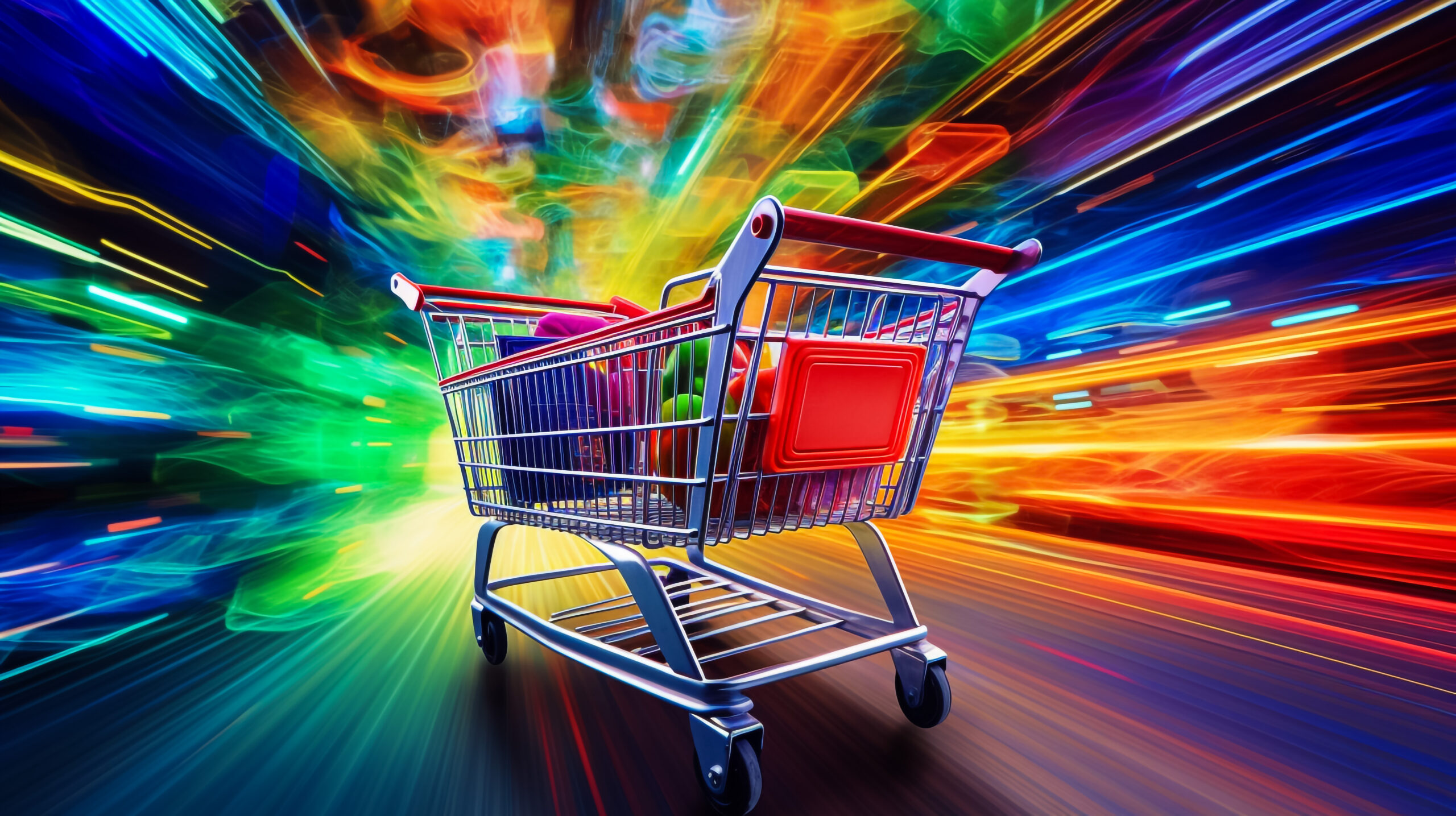Harnessing the Power of AI for Your Dropshipping Business in 2024
In the rapidly evolving world of e-commerce, staying ahead of the competition is crucial for the success of your dropshipping business. As we move into 2024, artificial intelligence (AI) has become an invaluable asset for entrepreneurs looking to streamline their operations and maximize their profits. In this article, we’ll explore the five best AI tools that can help you take your dropshipping business to the next level.
We strongly recommend that you check out our guide on how to take advantage of AI in today’s passive income economy.
Table of Contents
1. Google Bard: Your Go-To AI Assistant
Google Bard is a powerful AI tool that has quickly become a favorite among dropshipping entrepreneurs. Unlike its predecessor, ChatGPT, which has a knowledge cutoff date of September 2021, Google Bard provides up-to-date information in real-time. This means that when you ask for current trends or niche ideas, you’ll receive accurate and precise answers tailored to your dropshipping business needs.
Whether you’re looking for product titles, descriptions, or ad copy, Google Bard can generate high-quality content to help you optimize your dropshipping store. Its user-friendly interface and ability to provide relevant information make it an essential tool for any dropshipping entrepreneur seeking to stay ahead of the curve.
2. Flair: Enhancing Your Product Images
In the world of dropshipping, visually appealing product images can make all the difference in attracting and converting potential customers. Flair is an AI tool that enables you to take your product images to the next level by removing backgrounds and placing your products in realistic, eye-catching environments.
By using Flair to enhance your product images, you can create a unique and welcoming experience for your visitors, setting your dropshipping store apart from the competition. While not every generated image may be perfect, Flair offers a wide range of options to help you find the perfect visual representation for your products.
Photoshop AI: For the Experienced Designer
If you have experience in design and want more control over the customization of your product images, Photoshop AI is a great alternative. Currently in beta mode, Photoshop AI allows you to select specific areas of an image and generate custom designs based on your prompts.
With Photoshop AI, you can either refine the images generated by Flair or create entirely new designs from scratch. This level of customization can be particularly valuable for dropshipping entrepreneurs who want to create a truly unique visual identity for their store.
3. Looka: Crafting the Perfect Logo
A strong logo is essential for establishing your dropshipping brand’s identity and creating a lasting impression on your customers. If you lack experience in logo design or find yourself short on time, Looka is an AI tool that can generate professional-looking logos in seconds.
To use Looka, simply enter your store name and answer a few questions about your industry, preferred color scheme, and desired symbol types. The AI will then generate a variety of logo options for you to choose from. While there is a cost associated with exporting your final logo, the time and effort saved can be well worth the investment for your dropshipping business.
Hatchful by Shopify: A Free Alternative
If you’re on a tight budget, Hatchful by Shopify is a free alternative to Looka. While it may not offer as many logo options or the same level of design quality, it can still be a useful tool for creating a basic logo for your dropshipping store.
4. Browse.ai: Competitor Monitoring on Autopilot
Keeping tabs on your competitors is crucial for staying ahead in the dropshipping game. Browse.ai is an AI tool that allows you to monitor your competitors’ websites for new product uploads, ad campaigns, and other key changes.
To use Browse.ai, simply enter the URL of your competitor’s store and select the specific elements you want to monitor, such as the product feed or Facebook Ads Library. Whenever a change or update occurs, you’ll receive a notification, allowing you to quickly adapt your own dropshipping strategy.
By using Browse.ai to monitor your competitors’ Google Ads and social media accounts, you can gain valuable insights into their marketing strategies and identify potential winning products for your own dropshipping business.
5. Magic Design by Canva: Generating Engaging Social Media Content
Maintaining an active and engaging social media presence is essential for driving traffic and sales to your dropshipping store. Magic Design by Canva is an AI tool that can help you generate eye-catching content for platforms like Facebook, Instagram, Twitter, and TikTok.
To use Magic Design, simply upload an image of your product and explore the various filters, formats, and themes available. The AI will then generate a range of content options, from feed posts to stories, tailored to your chosen platforms.
By utilizing Magic Design, you can save time and effort in creating visually appealing content to promote your dropshipping products and keep your social media accounts looking fresh and engaging.
Conclusion
As we’ve seen, AI tools can be game-changers for entrepreneurs looking to streamline and optimize their dropshipping businesses. By leveraging the power of Google Bard, Flair, Photoshop AI, Looka, Browse.ai, and Magic Design, you can create a more efficient, visually appealing, and competitive dropshipping store.
Remember, success in dropshipping relies on staying ahead of the curve and adapting to new technologies and trends. By incorporating these AI tools into your strategy, you’ll be well-positioned to thrive in the dynamic world of e-commerce in 2024 and beyond.
So don’t hesitate to explore these AI tools and see how they can benefit your dropshipping business. With the right combination of creativity, strategy, and artificial intelligence, you can unlock new levels of success and take your dropshipping venture to new heights.
Frequently Asked Questions (FAQ)
How profitable is dropshipping?
Dropshipping can be a profitable business model, but the level of profitability depends on various factors, such as your niche, target market, product pricing, and marketing strategies. With the right approach and dedication, it’s possible to achieve a profit margin of 10-30% or more. However, it’s important to keep in mind that competition can be fierce, and success requires careful planning, research, and continuous optimization of your dropshipping business.
How do I start a dropshipping business?
To start a dropshipping business, follow these steps:
- Choose a niche: Select a product category that aligns with your interests and has potential for profitability.
- Research suppliers: Find reliable dropshipping suppliers that offer quality products at competitive prices.
- Create an online store: Set up an e-commerce platform, such as Shopify or WooCommerce, to build your online store.
- Add products: Import products from your chosen suppliers to your online store.
- Set up payment and shipping: Configure your payment gateway and shipping settings to ensure smooth transactions and deliveries.
- Market your store: Promote your dropshipping business through various channels, such as social media, paid advertising, and email marketing.
- Optimize and scale: Continuously monitor your store’s performance, make data-driven decisions, and scale your dropshipping business as it grows.
Can I dropship on Jumia?
Yes, you can dropship on Jumia, one of Africa’s leading e-commerce platforms. Jumia offers a dropshipping program that allows entrepreneurs to sell products on their platform without holding inventory. To start dropshipping on Jumia, you’ll need to create a seller account, add products to your store, and manage orders and customer service. Keep in mind that Jumia has specific requirements and guidelines for its dropshipping program, so be sure to review and comply with their policies.
How does dropshipping pay?
In the dropshipping business model, you earn money by selling products at a higher price than the wholesale price you pay to your supplier. When a customer places an order in your online store, you collect payment from them, which includes your retail price and any applicable shipping fees. Then, you place the order with your supplier at the wholesale price and provide them with the customer’s shipping details. The supplier ships the product directly to the customer, and you keep the difference between the retail price and the wholesale price as your profit. This process allows you to earn money without having to handle inventory or manage shipping logistics yourself.

We strongly recommend that you check out our guide on how to take advantage of AI in today’s passive income economy.




